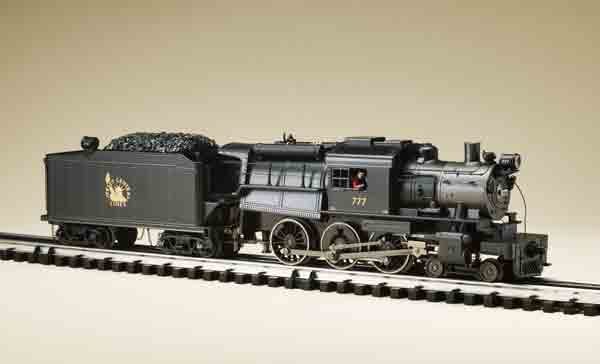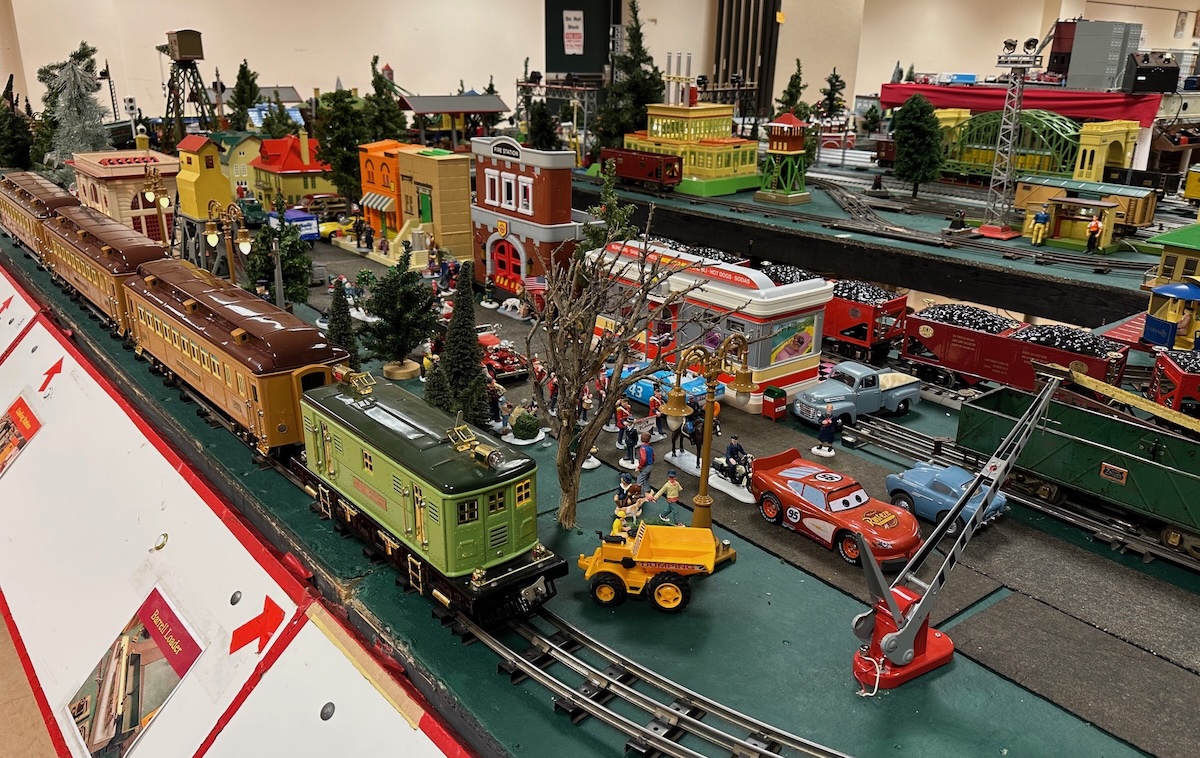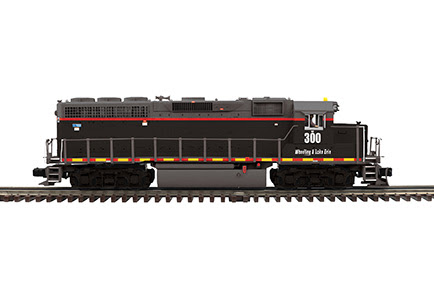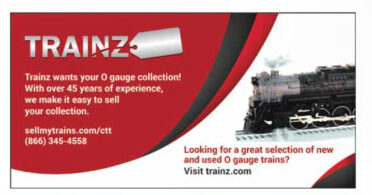Price: $449.95 (no. 30-1635-1) Min Curve: O-31 Cmd Low: 3.1 smph, Cnv Low: 8.2 smph, High: 76.0 smph, Drawbar Pull: 1 lb., 8 oz.
Features: Can-style motor, ProtoSound 2.0, coil coupler, smoke unit. Current production road names: Baltimore & Ohio, Central RR of New Jersey, Long Island RR, and Reading
The notion was that a larger firebox could be used to burn larger quantities of lower grade coal to reduce the cost of operation. While financially the Camelback was a success, its design still meant a fireman could fall to his death fairly easily and a engineer could be maimed or possibly killed by running gear flying off the drive wheels.
I had an uncle of my grandfather’s generation who fired “Mother Hubbards,” as Camelbacks were called, on the Delaware, Lackawanna & Western RR. My asking about them was the only time I ever heard him use salty language! Suffice it to say, the locomotives may have been popular with the accounting department, but not so much with the operators! Still, regular operation of this rolling deathtrap continued well into the diesel transition era.
The last steam locomotive operated on the Central RR of New Jersey was Camelback no. 774. Late in life the 4-6-0 gained fame hauling railfan excursion specials, but was eventually scrapped in 1956. Ironically, the Jersey Central engine was not the last Camelback to run in the U.S. That distinction goes to ex-Reading 0-4-0 no. 1187. The diminutive switcher was last run on the Strasburg RR in 1967. A surprise conclusion for an odd locomotive type.
Opening the box
“Stout” was my first impression as I lifted the MTH O gauge model out of the cradle. This is a hefty piece of metal. The face is both businesslike and conforming to the RailKing line level of detailing. The pilot of the Camelback is solid, although the struts are clearly shaped and have top and bottom cast-in rivets. There are brakeman’s steps on both sides and a cast-in dummy coupler on the point.
The top of the pilot and the running boards are smooth. Handrails run up, around the smokebox and along the length of the boiler. The smokebox had an add-on grab iron along the bottom and add-on classification lights, engine number plate, and headlight. There is a good level of rivet detailing on the face and in the center of the smokebox, cast-in hinges.
The forward placement of the cab interrupts the normal flow of the boiler design. You have a turbine behind the headlight and ahead of the smokestack. A sand dome is just ahead of the cab. Behind the cab you’ll see two “torpedo tubes” (air cylinders) mounted topside and a whistle/pop off valve.
On the engineer’s side ahead of the cab there is cast-in piping, while on the fireman’s side (yeah, he supposed to be at the rear) you’ll find an air compressor. On the sides of the firebox (remember, behind the cab) are two elevated walkways with handrails leading to the appropriate cab entrance. Boy, these are narrow on the model, and they were narrow on the real locomotive. You might as well have dubbed them “Catwalks of Doom.” Imagine bouncing down the rails, on one side a handrail and the other side a super-hot furnace. Wow. A fireman back then had to have the right stuff to get it done!
The most unusual feature is the firebox at the end of the model, which leaves the fireman in a pretty dangerous spot for stoking the locomotive. While there are two firebox doors to shove in the coal, the fireman needs to stand on the tender to do the job.
The tender is a solidly built little box with grab irons on all four corners, marker lights, a backup light, and a coil coupler on the rear. The coal load is a nicely done cast-in design.
The running gear is a simple affair that still manages to catch your eye when the steamer is rolling down the track.
The application of the paint was excellent, a nice contrast of dark and light. The Jersey Central Lady Liberty herald looked great.
On the test track
The 4-6-0 Camelback is an industrious worker. Just like the prototype locomotive, this O gauge replica would look fine on the point of freight or passenger equipment.
Powering up the sound system brought a smile to my face – it was a good rendition of a steam locomotive. Kicking it into gear, it crept in the slow speeds and was still capable of hauling, uh, freight at a pretty good clip.
Smoke unit performance was good.
Drawbar pull was a respectable 1 pound, 8 ounces, and the locomotive’s operation in all speed ranges was smooth.
The RailKing Camelback 4-6-0 is unique in appearance and delivers good performance. It is small enough to fit on modest layouts, and the fact that a few ran on the Jersey Central into the mid-1950s gives you a good window of opportunity if you are a steam-era or transition-era modeler.














